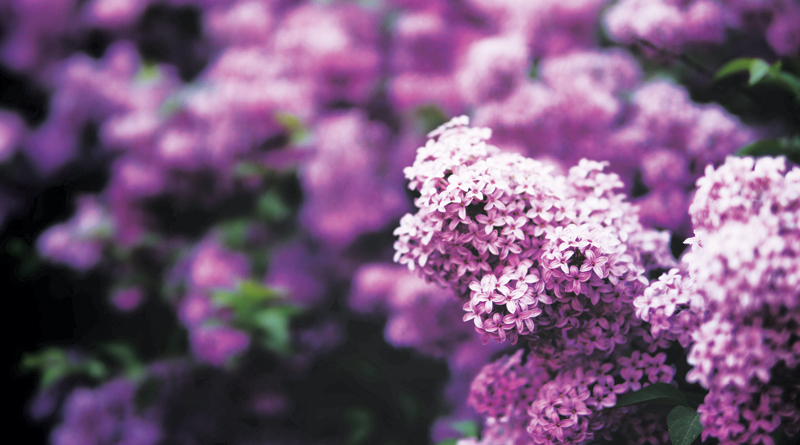ENJOYING THE BEAUTY OF LILACS – Green-Thumb Gardener

The aroma of common lilacs is filling the air recently and is an often requested shrub in the nursery. Syringa vulgaris is native to the Balkan Peninsula where it can be found growing on rocky hills. In the horticulture trade, numerous different types in several color options and sizes are available for purchase. There are early, mid, and late season blooming varieties. Lilacs are deer resistant and attract butterflies with their nectar.
Best culture practices for this shrub include:
– It must have at least 6 hours of sun.
– It prefers fertile, humus-rich soil that is well-drained and has neutral to slightly alkaline pH characteristics.
– Choose a space where the shrub can be allowed to grow and reach its full height and width potential (from 8’ to 20’ for the common lilac).
– Maintain pruning right after flowering to keep the shrub open and airy. Prune it to shape and remove suckers and the oldest canes along with any dead wood. If you prune too late, you will be cutting off next year’s blooms.
– Deep, infrequent watering is best, with 2” of water equivalent.
Lilacs generally transplant well. Make sure to spread out your roots that may be tangled in the container before putting it in your hole. Fall planting is recommended but spring is acceptable. Each subsequent year, a layer of compost covered by mulch is recommended to help control weeds and maintain moisture.
About the only pest/disease problems are slugs and snails. They can have powdery mildew which is unsightly, but not harmful. Keeping your shrub pruned to be open for air flow will help with this fungus issue. It is very important to not over-fertilize this plant as it will reduce blooming. A handful of 10-10-10 in late winter should be sufficient.
Some of the dwarf types include ‘Miss Kim’ in the 6 to 8’ range (Syringa patula) and the Korean lilac (Syringa palebinina) in the 4’ range of height. It can make a nice hedge type shrub for privacy. There are also smaller re-blooming types such as ‘Bloomerang’. Keep in mind this does not mean they are in constant bloom. They will have a spring flush and then a smaller flush later if the weather is appropriate.
Many people recognize the scent of lilacs and think of it as the introduction to spring. Visit your local, independent garden centers to learn more.
This article is sponsored by McNamara at Sand Point, which has 2 acres of production greenhouses, retail florist and gift shop, as well as retail garden center and wholesale plant business. Contact McNamara by calling 260-747-4131 or visit 4322 DeForest Ave, Ft. Wayne, IN 46809.
- Celebrating 20 Years Of Community At The Stand - April 12, 2024
- First Positive Case Of Chronic Wasting Disease In Indiana - April 12, 2024
- Southwest Allen County Schools Embark On Major Tree Plantings - April 12, 2024


